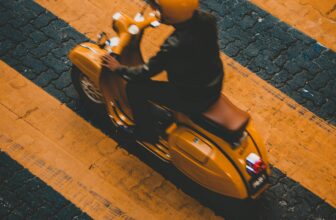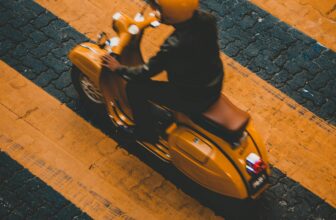1. Choosing the Best Motorized Scooter for Urban Riding
a. Best Compact Mobility Scooter
When selecting the best motorized scooter for urban riding, it’s essential to consider the size and portability of the scooter. A compact mobility scooter is ideal for navigating tight spaces and crowded sidewalks. Look for models with a small turning radius and lightweight design for easy maneuverability.
b. Best Portable Electric Mobility Scooter
Portability is crucial when it comes to urban scooter riding. The best portable electric mobility scooter should be easy to fold and transport, allowing you to take it on public transportation or store it in tight spaces. Look for models with a quick folding mechanism and a lightweight frame for maximum convenience.
2. Preparing Your Motorized Scooter for Safe Urban Riding
a. Ensuring Proper Maintenance
Regular maintenance is essential for the safe operation of your motorized scooter. Check the tires for wear and proper inflation, inspect the brakes for optimal performance, and ensure that all lights and signals are functioning correctly. Familiarize yourself with your scooter’s parts and accessories, such as buzzaround scooter parts or golden buzzaround xl parts, to ensure you can replace them when necessary.

b. Equipping Your Scooter with Safety Accessories
Adding safety accessories to your motorized scooter can significantly enhance your safety while riding in urban areas. Consider installing a rearview mirror for increased visibility, a horn or bell to alert pedestrians, and reflective tape or lights to increase your visibility to motorists. Additionally, a mobility scooter seat cover can provide added comfort during long rides.

3. Navigating Urban Terrain Safely on Your Motorized Scooter
a. Adapting to Different Types of Motorized Scooters
There are various types of motorized scooters available, each with its unique handling characteristics. Familiarize yourself with your scooter’s capabilities, such as its top speed, turning radius, and braking system, to ensure you can navigate urban terrain safely and confidently.

b. Avoiding Common Urban Hazards
Urban areas present unique hazards for motorized scooter riders, such as potholes, uneven pavement, and debris. Stay vigilant and maintain a safe speed to avoid these obstacles. Additionally, be cautious when crossing streets and intersections, as motorists may not always see you or anticipate your movements.

4. Interacting with Pedestrians and Motorists
a. Sharing the Sidewalk with Pedestrians
When riding your motorized scooter on the sidewalk, it’s essential to be respectful of pedestrians. Maintain a safe speed, yield to pedestrians, and use your horn or bell to alert them of your presence when necessary. Always be prepared to stop or slow down to avoid collisions.

b. Navigating Traffic Safely
When riding in traffic, it’s crucial to follow the rules of the road and be aware of your surroundings. Use hand signals to indicate turns, obey traffic signals, and stay in designated bike lanes when available. Be cautious when passing parked cars, as doors may open unexpectedly.

5. Storing and Transporting Your Motorized Scooter
a. Proper Storage Techniques
Proper storage is essential for maintaining the longevity and performance of your motorized scooter. Store your scooter in a cool, dry place, and use a scooter cover to protect it from dust and debris. Ensure that the scooter is turned off and the battery is disconnected before storing it for extended periods.

b. Mobility Scooter Transportation Options
Transporting your motorized scooter can be a challenge, especially in urban areas. Look for public transportation options that accommodate scooters, such as buses with wheelchair lifts or designated scooter spaces. Alternatively, consider investing in a portable travel scooter that can be easily folded and transported in a car or taxi.
6. Staying Visible and Alert While Riding
a. Wearing High-Visibility Clothing and Accessories
Wearing high-visibility clothing and accessories can significantly increase your visibility to motorists and pedestrians. Opt for brightly colored clothing, reflective vests, or LED lights to ensure you are seen while riding your motorized scooter in urban areas.
b. Maintaining Situational Awareness
Staying alert and aware of your surroundings is crucial for safe scooter riding in urban environments. Keep your eyes and ears open for potential hazards, such as pedestrians, cyclists, and motorists. Regularly check your mirrors and be prepared to react quickly to changing traffic conditions.
7. Practicing Safe Riding Techniques
a. Mastering the Art of Defensive Riding
Defensive riding is a critical skill for motorized scooter riders in urban areas. This involves anticipating potential hazards, maintaining a safe following distance, and being prepared to react quickly to changing traffic conditions. By practicing defensive riding techniques, you can significantly reduce your risk of accidents and injuries.
b. Adhering to Local Laws and Regulations
It’s essential to familiarize yourself with local laws and regulations governing motorized scooter use in your area. This may include helmet requirements, speed limits, and restrictions on where scooters can be ridden. Adhering to these rules not only ensures your safety but also helps to maintain a positive image for motorized scooter riders in your community.





